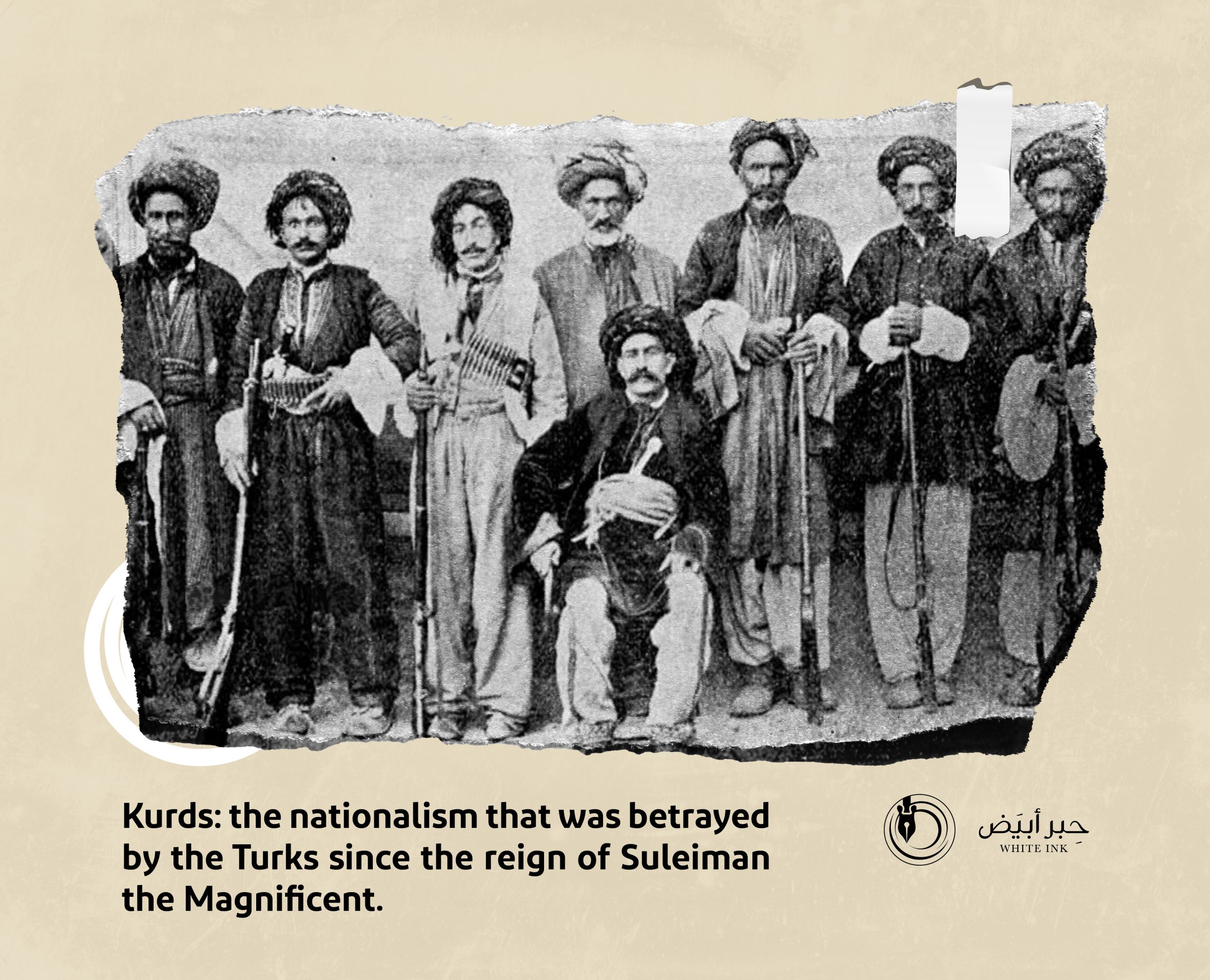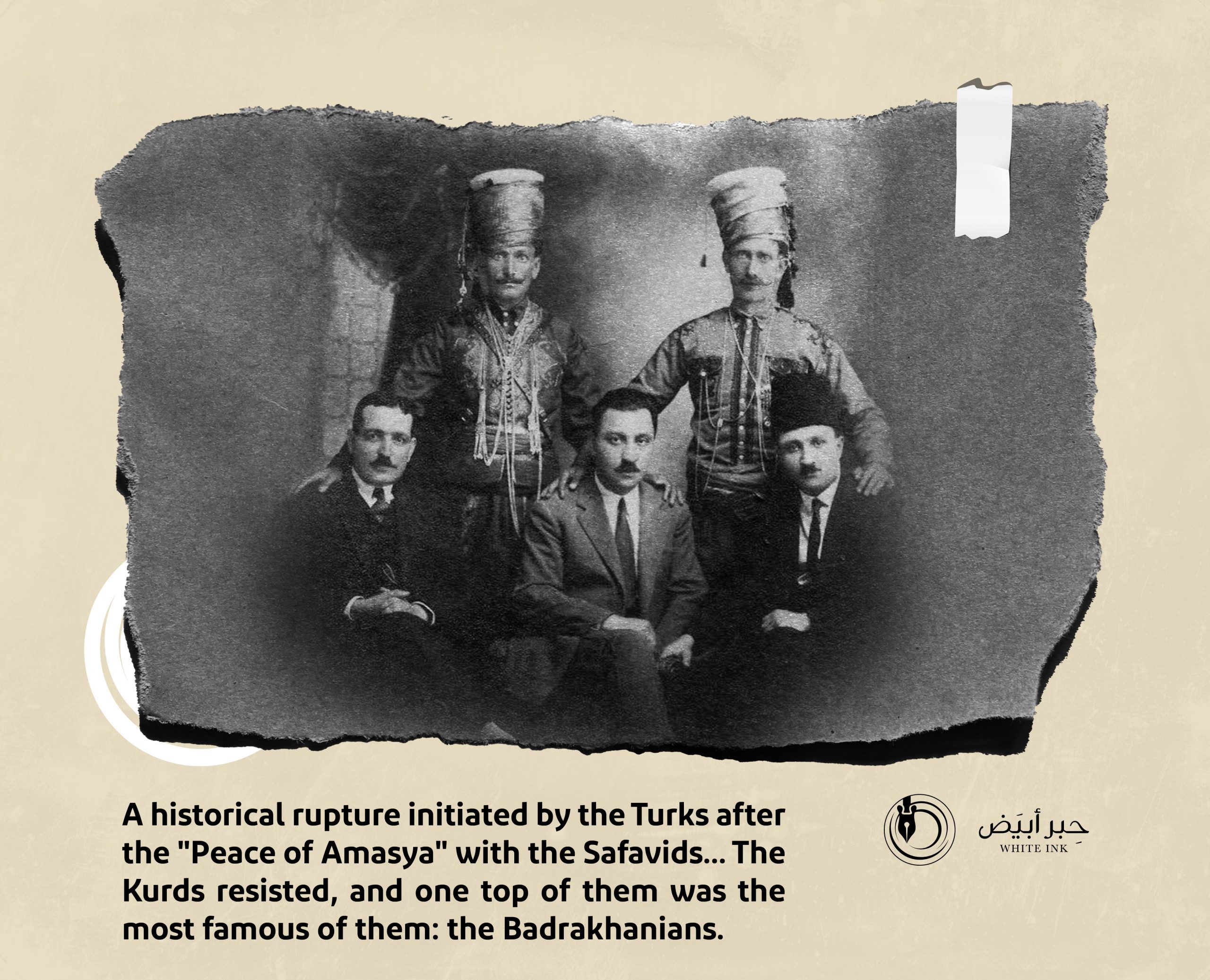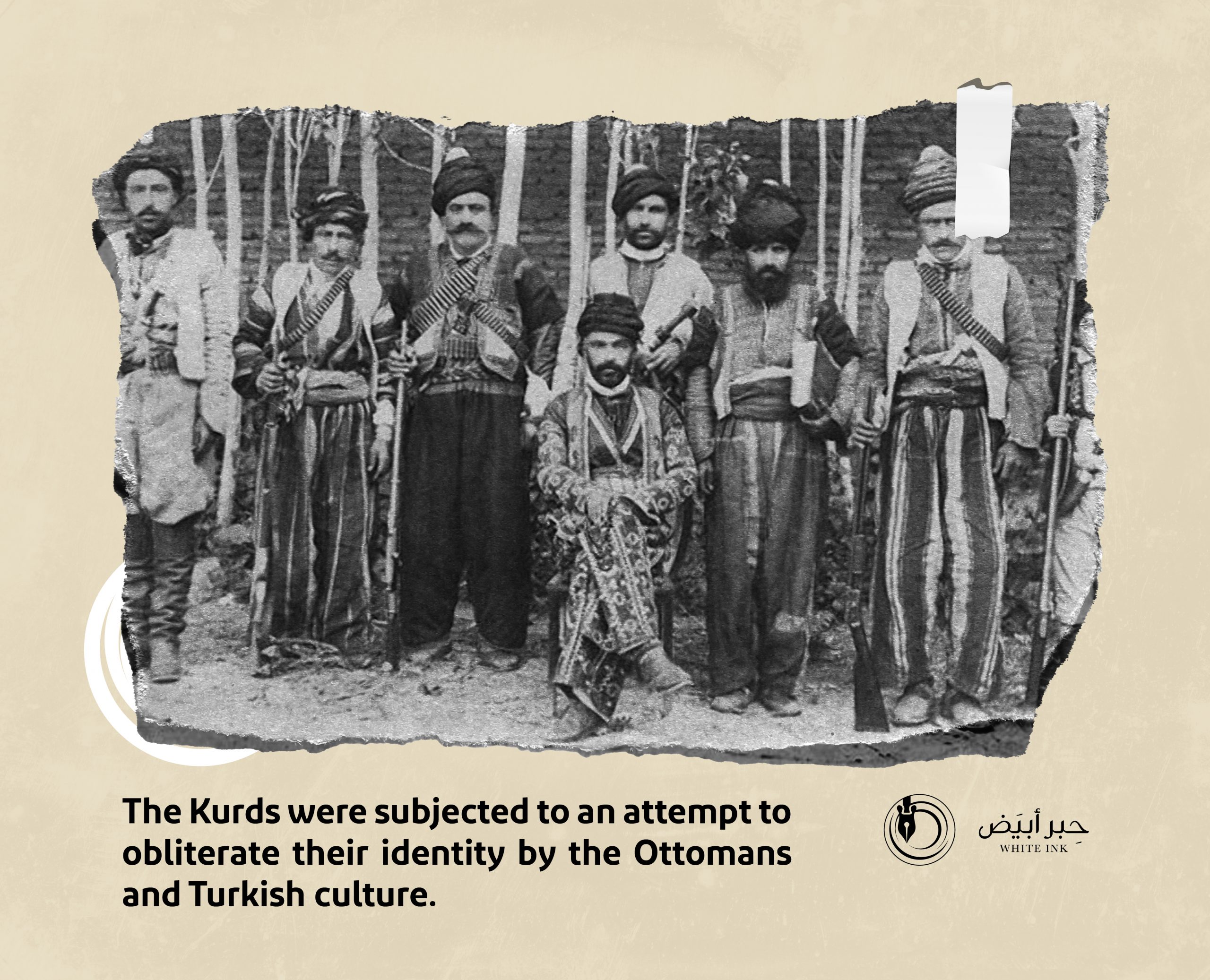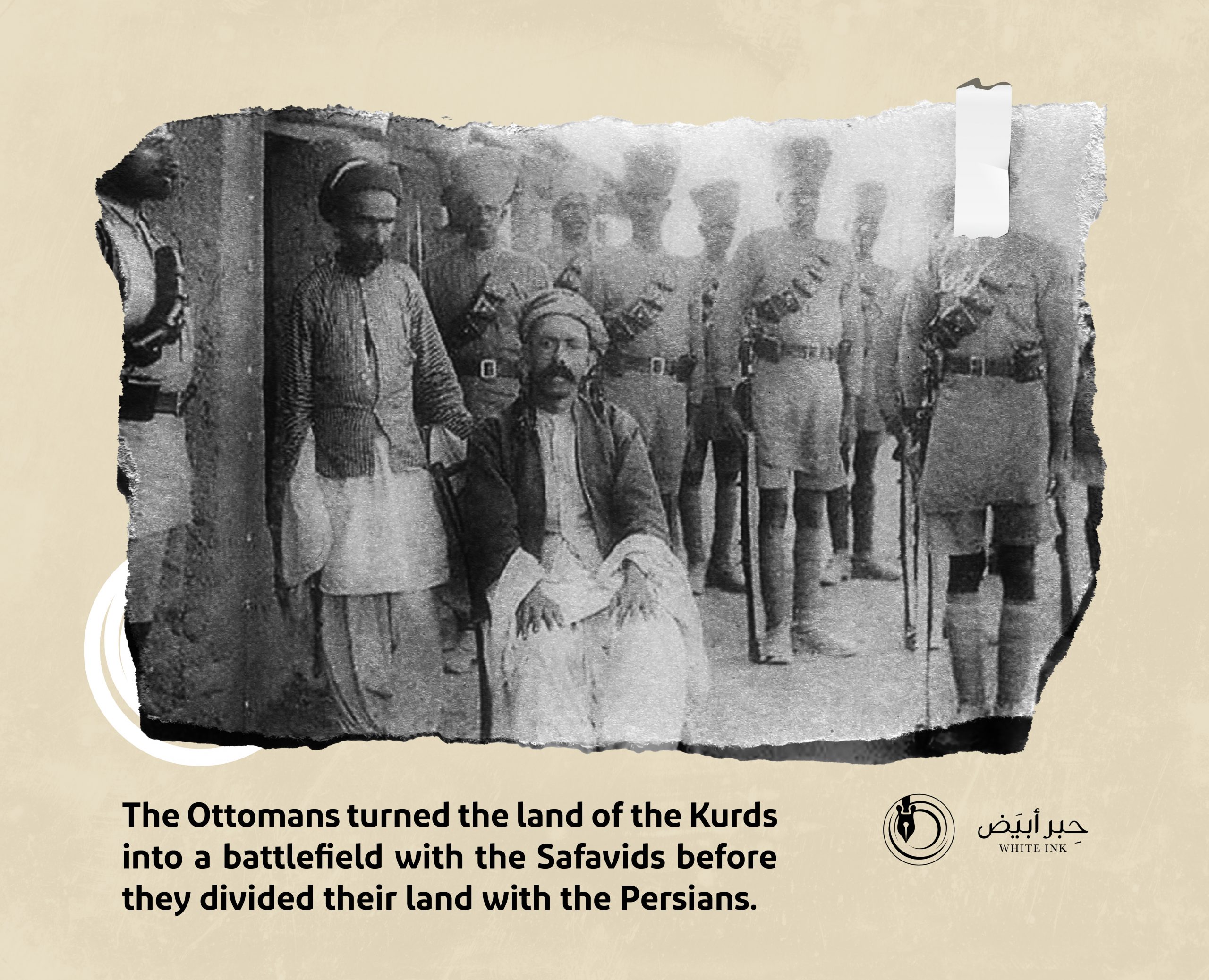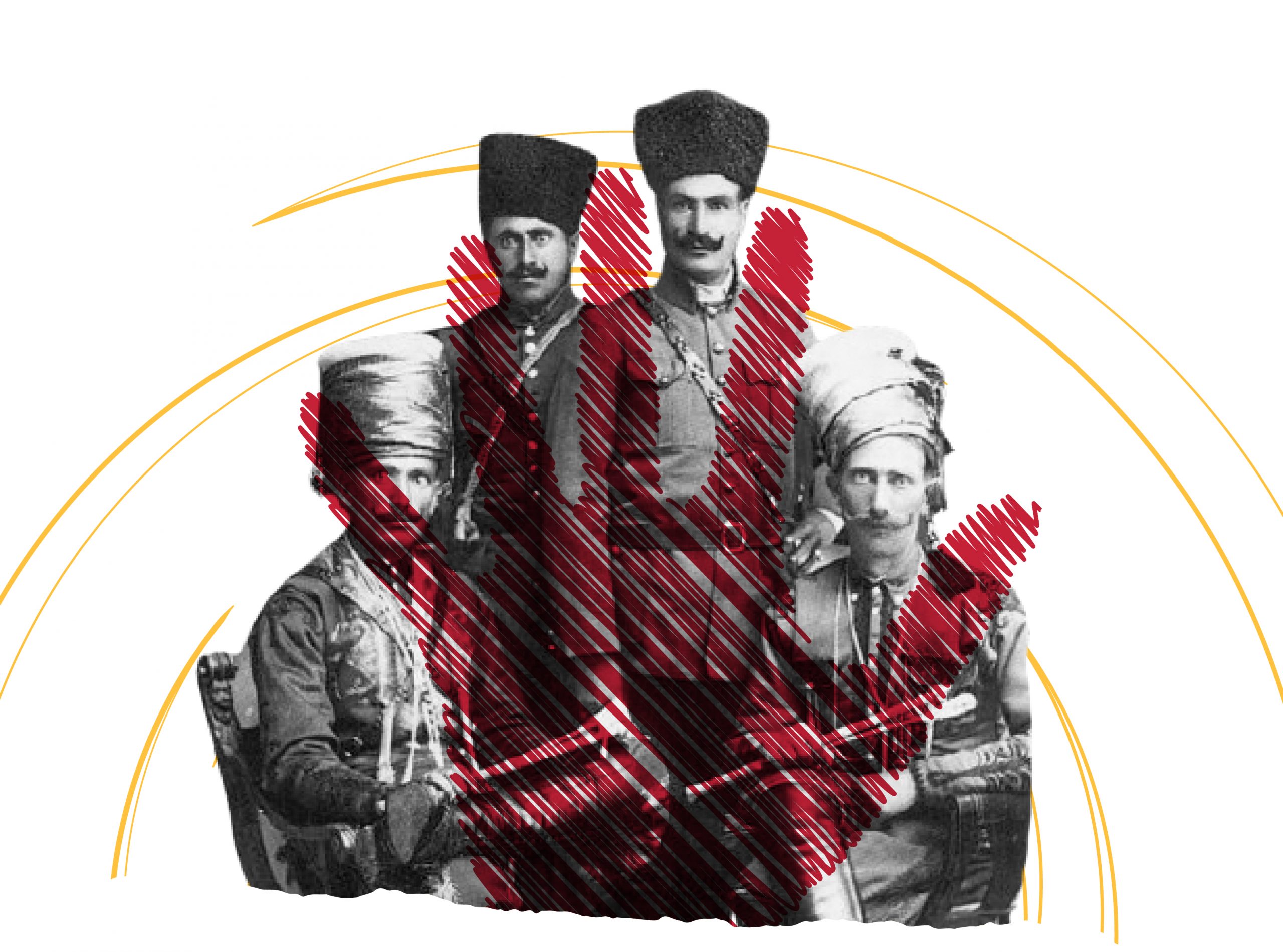
They were a human shield for the protection of the Islamic world
The Kurds... the people who made the Ottoman sultans anxious
After all those decades that have passed, the facts that have unfolded and the historical documents that have emerged, historians have concluded an undoubtable fact, which is that the hearts of the sultans of the Ottoman Empire were filled with superiority towards all ancient nations, especially the Arabs. This supremacy did not remain confined, but rather turned into barbaric policies that the Turkish sultans held unto towards the peoples they imposed their control over. According to historians, this behavior of the Ottomans was mainly caused by their feeling of permanent inferiority as a result of their lack of any historical or civilizational origin.
The Kurds were not an exception, for that ancient nation has witnessed the same as all nations, by the hands of the Turkish sultans, and just as the Ottomans ruled the Arabs and enslaved the Muslims and caused their backwardness, they also ruled the Kurdish areas and caused their backwardness, but at the time when Arabs were able to liberate themselves by fighting back, the Kurds kept fighting for freedom from the Turks; historians believe that the main reason for this is due to the presence of the Kurds inside Turkey, which means that the success of these people may bring down the Turkish state, this led the Kurds to be massacred since the emergence of the Turkish sultans until now.
The Turkish sultans realized the strength of the Kurds and decided to make peace with them from the beginning, before turning against them.

Despite the attempts of the Turks to display the Kurds as intruders to the Arabs on one hand, and to Islam on the other hand; historical documents reveal the falsehood of this claim. The origin of the story lies in knowing who the Kurds are, how they appeared in history, and what is their role in Islam from the beginning?
According to historical sources, Kurdish nationalism has been known since the beginning of human history. This is evidenced by the fact that the use of the term “Kurds” appeared since the second century BC until the time of the Arab Islamic conquest became a well-known term, and the areas they inhabited were called “Kurdistan”; the word “Kurd in Persian means “the brave ones” and “Stan” means “the country”, while the Arabs called the Kurdish regions “the region of the mountains” due to their residency near the mountains.
As for the geographical distribution in particular, the Kurds in Iraq were concentrated in the areas of Amadiyah, Dohuk, Kirkuk, Sulaymaniyah, and around Mosul and Erbil, and in Turkey they lived near the Turkish-Iranian borders in the area around Lake Van, Diyarbakir and the Upper Mesopotamia, in addition to some other areas in the plateaus of Iran; this important geographical concentration made many countries and empires try to invade the Kurds, who defended their country for centuries.
The entry of the Kurds into Islam did not take long. Historical narrations show that the Kurdish regions were conquered during the reign of the Caliph Omar Ibn Al-Khattab in (638AD). In the era of the Umayyad state, the Kurds did not cause any problems in the Islamic state, as they turned after the Islamic conquest into fighters under the flag of the Islamic state, especially the Anatolian Kurds who turned into a human shield to protect the Islamic state, due of their borders being adjacent to the Byzantine state.
The first Kurdish protest was in the era of the Abbasid state (750-1517), when their stances varied and they declared the rebellion more than once. Perhaps the most famous uprising was what they led in Mosul during the era of the Abbasid Caliph Abu Jaafar Al-Mansur (174 AH / 764 AD), and the uprising happened again during the reign of Al-Mu’tasim (225 AH / 839 AD); the Kurds of Mosul joined the Mansour al-Kharji revolt in the year (252 AH / 866 AD).
As a result of the Kurds alliance with all the opponents of the Abbasid state, as shown. It was not surprising that they supported the Seljuk Turks who aspired at this time to establish their independent state. Common interests were the main reason why the first meeting between the Anatolian Kurds and the Turkish race represented in the Seljuk state, was held. Although it began with an alliance and common gains, but everything changed later; instead of the Seljuks, the Ottomans took their place, and instead of the alliance came estrangement, wars and tragedy.
But until then and during the era of the Seljuk state, the Kurds achieved many gains, most notably, the recognition of their areas of existence as a unified region under the name “Kurdistan”; this happened during the reign of Sultan Sanjar Seljuk (1117-1156 AD), and there was a governor appointed by the Seljuk Sultan for this region as of all other countries.
Despite the collapse of the Seljuk Turks thereafter, the Kurds maintained their territory and their interaction with the Islamic countries. As a matter of fact, ever since the establishment of the Zangid state (1127-1250 AD), the Kurds became predominantly assuming positions of command of the Islamic armies, which prompted historians to describe them as “Defense Ministers of Islamic countries.” Undoubtedly, the Kurds reached the peak of their glory at the hands of Salah al-Din al-Ayyubi, the Kurdish who established the Ayyubid state (1174-1250 AD), and liberated Jerusalem from the Crusaders.
When the Turkish sultans came into existence, the Kurds were known for their historical and civilized roots, and they had a distinct role since the advent of Islam; they represented a crucial element in the Islamic administration; as a matter of fact, defense ministers were able to assume responsibility in such difficult historical times and proved their competence and courage, at a time when Muslims were not aware of the Ottomans and from which tribe did they come from and what religion did they follow?
Ottoman historians tried to distort Kurdish history and undermine its value and strength.

This is the truth that the Turkish sultans tried to stain with false narrations to display the Kurdish race as an intruder to Arabs and Islam, but historical sources also confirm that the mere existence of the Kurds made the Turkish sultans anxious.
Perhaps the most prominent reasons for the Ottomans’ anxiety towards the Kurds are their location in a distinct geographical region inside Turkey, as they are adjacent to the Byzantine borders, in addition to their Islamic prestige and ability to fight, on the one hand, and on the other hand, the domination of the Safavid state (1501-1736) over some Kurdish areas , pushed the first Ottoman sultans to make peace with the Kurds, in fear of provoking them, before Selim I (1512-1520) came to think for the first time about making deals with them to get rid of the Safavids, and that was the first trap that the Kurds fell into and they paid a heavy price for it.


- Basili Nikitin, The Kurds: Sociological and Historical Study, translated by: Nouri Talabani, 2nd Edition (Beirut: Dar Al-Saqi, 2001).
- Thomas Boa, History of the Kurds, translated by: Muhammad Taysir Mirkhan (Beirut: Dar Al-Fikr al-mu’āṣir, 2002).
- Abbas Al-Azzawi, Tribes of Iraq: Part 2 (Baghdad: Al-Maaref Press, 1947).
- Cameran Abdul Samad Al-Dosky, Kurdistan in the Ottoman Era (Beirut: Arab Encyclopedia House, 2006).
- Mohsen Muhammed Al-Metwally, The Kurds of Iraq (Beirut: Arab Encyclopedia House, 2001).
- Muhammad Shafiq Ghorbal, The Facilitated Arabic Encyclopedia, Volume 2, (Cairo: Dar Al-Jil, 1996).
- Moheb Allah, The historical, geographical and cultural location of the Kurds and Kurdistan (without a publisher: without a publishing house, 1991).

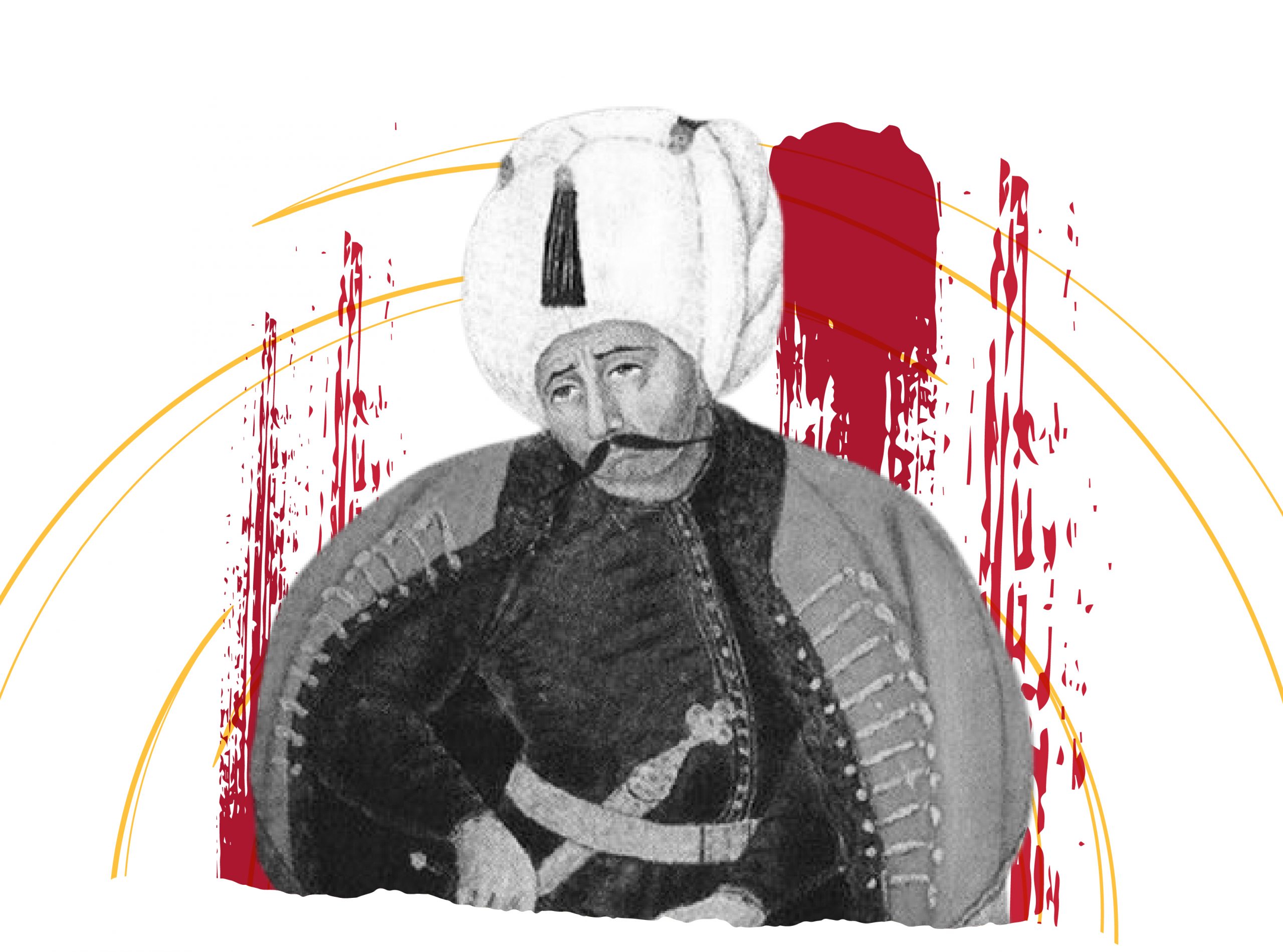
The people who terrified the “Butcher” Selim I
The Ottomans made a temporary deal with the Kurds, then turned against them
It was normal for a state established on bloodshed allowing enemies from far and wide to surround the lands of others, and history has not witnessed a state that took killing as a symbol, like the Ottoman Empire, which antagonized all countries and citizens.
Therefore, it was not strange – when Selim I took power in 1512 – that his kingdom was threatened from far and wide; on one hand, the Mamluks who controlled Egypt with its regional and geographical weight and its extension in the Levant, and on the other hand, the adjoining Safavids who were able – in a short period – to control of the country of the Kurds and to transform Azerbaijan into a settlement for the Safavid forces that were known as “Qizilbash”, forces that were known for their ferocity and the ability to attack at any time.
Historical documents reveal that Selim I divided his enemies according to the level of severity, and realized from the very first moment that the greatest danger lies in the Safavid state, not in the Mamluks who are relatively far from Anatolia, and he also realized that he would not be able to defeat the Safavids alone due to the weakness of his army and their lack of capacity to withstand for a long time against a fierce enemy like the Safavids.
Hence, Selim I began to consider searching for allies, although the Turkish sultans were constantly anxious about the Kurds, as a race with a civilized history and inhabiting parts of Turkey, but Selim I, who enshrined the principle of the best interest; as he realized that there is nothing better than the Kurds, to ally with in order to defeat the Safavids. On one hand, the Safavids will not expect that strike from the inside, which means confusing them and easily defeating them. On the other hand, the Kurds who are known for their fierce fighting ability, can eliminate the Turkmen tribes that refused to recognize the Ottoman Empire, thus, hitting all his targets with one arrow.
For the Kurds, the alliance with Selim I was not out of love for the Ottomans, but there were also interests, the first of which was the aversion of the Kurds of the Sunni sect from living under the banner of the Safavid Shiite sect; in addition to the Kurds’ desire to regain their independence that the Safavids had stolen from them.
Due to these common interests, Idris Al-Badlisi, the leader of Kurdistan, met with Selim I, who was subject to all the conditions of Al-Badlisi. As the Ottoman historian, Evliya Çelebi, who visited the Kurdish lands at the time, explains, these conditions included the independence of Kurdistan and that the Kurdish state will not be part of the Ottoman Empire except in name only, and the Turkish sultans will not have the right to assume or dismiss any “khan”, which is the title of the ruler of the Kurds; the Kurds also have the right to form their own army and to have their taxes reduced in addition to their freedom to regulate relations between the Kurdish emirates and the Ottoman Empire.
Military interest made Selim I ally with the Kurds against the Safavids.

Thanks to the signing of that agreement, the Kurds fought the Battle of Chaldiran in (1514 AD) side by side with Sultan Selim I, whose plan succeeded where he was able, with the aid of the Kurds, to defeat Shah Ismail al-Safavi, who fled on the run, and even one of the Shah’s wives fell captive in the hands of Selim I; this agreement was later called the Chaldiran alliance.
Historians believe that the reason for Selim I’s submission to all these unprecedented conditions is his certainty that his kingship is at the disposal of the Kurds, so if they refuse to have an agreement with him, this means that the Safavid state will wipe out the Ottomans from existence; other historical narrations also indicated that Selim I also benefited from the Kurds in making them the first line of defense to protect him from the attacks of the Persians, who were strong and ready to defeat the Ottomans at any time.
For these reasons, Selim I was keen to respect the Chaldiran alliance despite his misconduct and his reputation in all the agreements he made, in a way that historians of the Ottoman court were unable to hide, and despite Selim I’s title of Butcher, he stayed away from the Kurds and did not try – until the end of his rule (1520 AD) – to provoke them; this led some to say that the relationship of the Kurds with Selim I was nothing but a short honeymoon that ended with the death of the Butcher.
As for the Kurds, according to historians, the alliance with the Ottomans only resulted in losses and massacres thereafter. Their accession to Selim I put them in the crosshairs of the Safavid state. Moreover, this alliance made the Kurds regarded as part of the Ottoman Empire, which means that all the enemies of the Ottomans became enemies of the Kurds.
Regardless of the temporary gains made by the Kurds with autonomy, historians believe that these gains were not to last with a state whose sultans were famous for breaking all promises and violating all covenants they have agreed upon, and under an Ottoman regime based on murder and assassination, which is what happened; as soon as Selim I passed away, his son Suleiman the Magnificent came to denounce everything, where the Kurds lost everything, believing at the time that betting on the Ottoman Empire was always a losing bet.
Suleiman the Magnificent turned against the Kurds after order was restored in his state.



- Robert Mantrand and others, History of the Ottoman Empire, translated by: Bashir El-Sibai (Cairo: Dar Al-Fikr, 1993).
- Suraiya Faroqhi, The Ottoman Empire and the World Around It, translated by: Hatem El-Tahawy (Beirut: Dar Al-Mada Al-Islami, 2008).
- Basili Nikitin, The Kurds: Sociological and Historical Study, translated by: Nouri Talabani, 2nd Edition (Beirut: Dar Al-Saqi, 2001).
- Thomas Boa, History of the Kurds, translated by: Muhammad Taysir Mirkhan (Beirut: Dar Al-Fikr al-mu’āṣir, 2002).
- Cameran Abdul Samad Al-Dosky, Kurdistan in the Ottoman Era (Beirut: Arab Encyclopedia House, 2006).
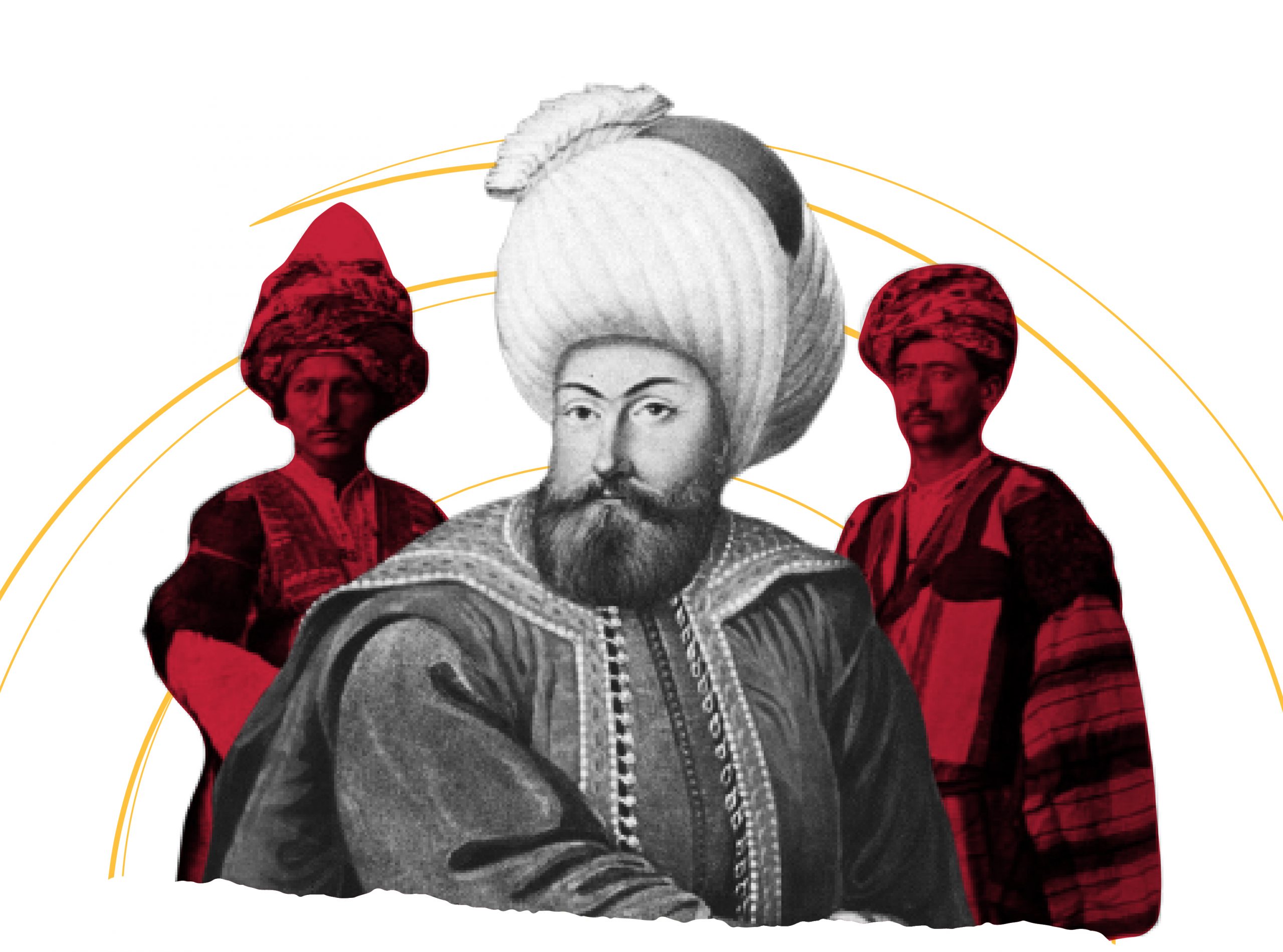
The First One Who Divided Their Countries and Displaced Them
Suleiman the Magnificent Inaugurated the Kurdish “Bloodbath”
History is merciless. Leaders and headmen shall be aware that one mistake may lead a nation to damage. Sometimes, it may rather eliminate it. This is what happened to Kurds and their relationship with the Ottoman Empire. It started with mutual concern between the two parties. It was followed by an alliance that quickly ended and turned into hostility that caused bloody massacres from which Kurds suffered until today.
The story details date back to (1514 AD) when Idris Bitlisi, the leader of Kurds at that time, made a political deal with Selim I (1512- 1520). The deal was that Kurds should help Selim to gain victory over the Safavid state; in return, Ottoman Sultan shall recognize the autonomy of Kurds and give them freedom to form their own army and in addition; not to interfere in their internal affairs. Indeed, the deal was made and Selim I gained victory over Safavids in Chaldiran (1514 AD). The deal between Kurds and Turkish was named Chaldiran.
The situation did not last long; as soon as Selim I died (1520 AD), everything changed. Although alliances made between countries do not depend on the life or death of people, this was not applicable to Turkish sultans as whenever one of them superseded, he breached the covenant of his predecessor and so on. Thus, they were known as the Empire of breaching covenants. This was the first mistake of Kurds, even if they realized it too late.
Suleiman the Magnificent (1520- 1566), who ruled after his father Selim I, was not a man who keeps covenants or alliances. Once he had assumed power, he repudiated any agreement with Kurds. He imposed some sanctions which included Kurdish princes. This was considered a breach of Chaldiran alliance which stated that the Ottoman Empire shall not interfere in any Kurdish matter.
Things did not end at this point. Safavid state quickly regained its strength and prepared its armies to avenge Turkish sultans. It started launching military campaigns against the Ottoman countries. Ottoman Empire could only respond by counter military campaigns. Meanwhile, Kurdistan became an arena where Safavid and Ottoman armies fought. For more than three decades, Kurdistan was subject to great destruction which led to ruining the country which impoverished its people and caused many of them to immigrate in order to save their lives.
Some historians believe that what the Ottoman Sultan Suleiman the Magnificent did was out of a pure pragmatic perspective. Sultan Selim I had to agree with Kurds at a time when enemies surrounded him from all sides. Under Chaldiran alliance, he could get rid of a fierce enemy represented in Safavid state. However, when Suleiman the Magnificent assumed power, dangers surrounding the Ottoman Empire slightly declined after Ottomans took control of Egypt and eliminated Mamluks, the strongest rival to Ottomans in the Arab world.
After that, the Magnificent felt that he did not need an alliance under which he would concede Kurdistan lands to Kurds. As explained by historians, this was the mistake of Kurds from the beginning, they did not realize that their alliance with Selim I resulted from historical circumstances which would certainly change. In addition, Ottomans would breach their covenants as usual, especially that conditions of Kurds were not simple or acceptable to the Ottomans.
However, it was too late. From the very first moment of his reign, Ottoman Suleiman the Magnificent dealt with Kurdistan as if it was subject to his actual power. He was indifferent to any agreements, and this was confirmed by his actions. He increased his interference in the internal affairs of Kurds until it came to imprisoning and killing some princes inside Kurdistan so that he became the first one of Turkish sultans to inaugurate the bloodshed. It is considered the longest and the most terrible bloodshed in history; in terms of the number of victims.
As Suleiman the Magnificent was the first one of Ottoman sultans to kill and imprison Kurds, he was also the first to divide their lands. In (1555), the Peace of Amasya, the first official agreement between Ottoman Empire and Safavid state, was signed after years of harsh fighting. In such agreement, borders were defined, and Kurdistan was divided. Some areas became subject to Ottoman control while other areas were under Safavid control.
The “Magnificent” presented a part of Kurdistan to its Safavid enemies within the Peace of Amasya.

Subsequently, in a political deal, and due to their confidence in Ottomans, Kurds lost everything due to Suleiman the Magnificent. They lost the independence of their lands after long years of struggle and self- sacrifice in order to achieve this dream. In addition, Kurdistan turned into a country that was under rubble as a result of wars between Safavids and Ottomans. Finally, they found themselves in a double bind. On one hand, Safavid state would not show mercy to them because of their previous alliance with Ottomans against them. On the other hand, Suleiman the Magnificent would not recognize them under any circumstances. Thus, they had to fight the two states.
According to some historians, since the era of Suleiman the Magnificent, Kurds have not had any other rights or agreements similar to the one that was with Selim I. Turkish sultans became the sworn enemies of Kurds. They did not refrain, even for a short time, from fighting them and displacing them to other countries.
Kurdistan became a field of Ottoman- Safavid battles for a long time.



- Ahmed Wasfy Zakaria, Tribes of the Levant (Ashaer Al- Sham), 2nd edition (Damascus: Dar Al- Fikr, 1983).
- C. Mostras, the Geographical Dictionary of Ottoman Empire (Al- Mo’gam Al- Gography Lilimbratoria Al- Othmania) translated by: Esam Al- Shahadat (Beirut: Dar Al- Hazm, 2002).
- Mohammed Farid Bek, lawyer, History of the attic Ottoman state, reviewed by: Ihsan Haqqi (Beirut: Dar An- nafaes 1983).
- Mohammed Mokhtar Basha, Inspirational Matching in Comparing Hijri Dates (Al- Tawfikat Al- Elhamia Fi Mokaranat Al- Tawarikh Al- Hijria) (Cairo: Arab Institute for Research and Publishing, 1980).


